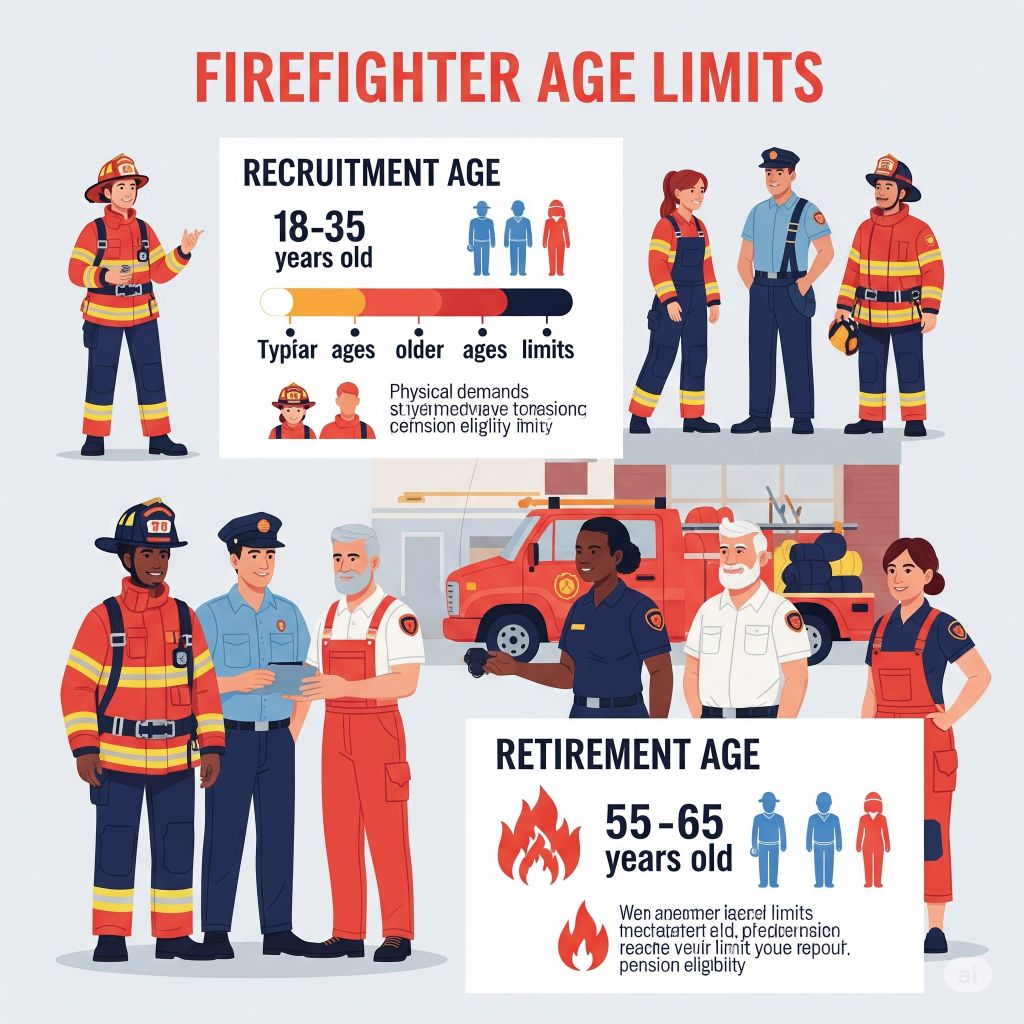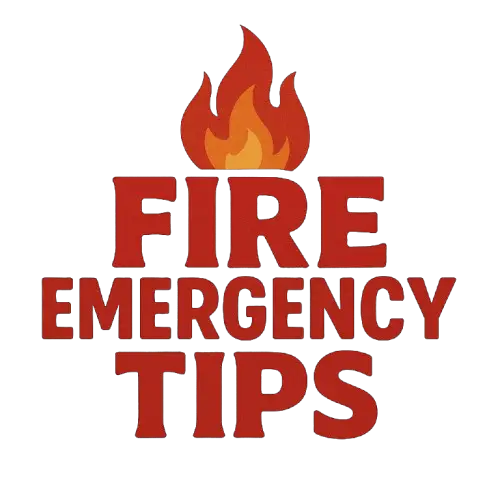
As a seasoned firefighter, I know firsthand the physical and mental demands of the job. The question of age limits for firefighters is a hot topic in the industry. In this article, I’ll delve into the debate on how old is too old to fight fires and the factors that come into play.
Age brings experience, but it also raises concerns about agility and reaction time in high-pressure situations. Many fire departments have set age limits to ensure the safety of both firefighters and the community. Join me as I explore the arguments for and against age restrictions in firefighting and the importance of balancing experience with physical capabilities.
Key Takeaways
- The physical demands of firefighting require strength, endurance, and agility to handle challenges effectively.
- Fire departments enforce age limits to ensure personnel can meet the demanding nature of the job physically.
- Factors influencing age restrictions include physical demands, health concerns, job performance, risk management, legal compliance, and balancing experience with physical capabilities.
- Arguments for age limits focus on physical preparedness, health, safety, job performance, risk management, and legal compliance.
- Arguments against age limits highlight the value of experience, mentorship, diverse skill sets, and adaptability in older firefighters.
- Balancing experience and physical capabilities is crucial to maintaining a skilled and safe firefighting workforce.
The Physical Demands of Firefighting
Being a firefighter is physically demanding. It requires strength, endurance, and agility to handle the challenges that come with the job. As I’ve experienced firsthand, fighting fires involves carrying heavy equipment, navigating through tight spaces, and working in high-stress environments.
Physical fitness is crucial for firefighters to perform effectively and safely on the job. Maintaining a high level of fitness can help reduce the risk of injuries and ensure that firefighters can respond promptly to emergencies. The ability to move swiftly and make quick decisions can make a significant difference in saving lives and protecting property.
Firefighters often face extreme temperatures, thick smoke, and unstable structures, all of which require them to be in peak physical condition. The unpredictable nature of firefighting means that firefighters must be ready to adapt to various challenges at a moment’s notice.
In emergency situations, every second counts, and being physically fit can mean the difference between life and death. Firefighters need to be able to carry out their duties efficiently, without being hindered by physical limitations.
Factors Influencing Age Restrictions
When considering age restrictions for firefighters, several factors come into play to ensure the safety and effectiveness of firefighting personnel. Here are some key aspects that influence age limits in fire departments:
- Physical Demands: Firefighting is a physically demanding job that requires strength, agility, and endurance. As firefighters age, there may be natural declines in these physical attributes, which can impact their ability to perform effectively in emergency situations.
- Health and Safety Concerns: Age-related health conditions and decreased flexibility can pose potential risks to older firefighters. By setting age limits, fire departments aim to prioritize the well-being and safety of their personnel, as certain health conditions may become more prevalent with age.
- Job Performance: Maintaining high performance standards within the fire department is crucial for ensuring swift and efficient responses to emergencies. Age limits are implemented to uphold the performance levels needed for effective firefighting operations.
- Risk Management: Fire departments focus on risk management strategies to minimize the chances of on-the-job injuries or incidents. Age restrictions help mitigate risks associated with age-related physical limitations that could compromise firefighter safety and operational efficiency.
- Legal and Regulatory Compliance: Adhering to legal and regulatory requirements is paramount for fire departments. Age restrictions may be in place to comply with industry standards, guidelines, and laws that govern firefighter recruitment and retention practices.
- Balancing Experience and Physical Capabilities: While experience is valuable in firefighting, it must be balanced with the physical abilities required to perform the job effectively. Age limits help strike a balance between leveraging the experience of seasoned firefighters and ensuring that personnel can meet the rigorous demands of the role.
🧯 Firefighter Age Limits: Minimum and Maximum
✅ Minimum Age Requirement
In the U.S., most fire departments set the minimum age to apply at 18 years old. Some departments (especially those with academies or cadet programs) allow entry-level training at 17 with parental consent.
Key Minimums:
- Municipal Fire Departments: 18+
- Wildland Firefighting (e.g., USFS): 18+
- Volunteer Fire Departments: 16–18 (varies by state)
🚫 Is There a Maximum Age Limit?
The maximum age to become a firefighter varies greatly by jurisdiction, department, and union rules. While no national age limit exists, many departments set age caps, typically for entry-level applicants.
🔹 Typical Maximum Age Ranges:
| Jurisdiction | Max Age to Apply |
|---|---|
| FDNY (New York City) | 29 |
| LAFD (Los Angeles) | No max (must pass test) |
| Chicago FD | 37 |
| Phoenix FD | 35 |
| Federal Wildland | No max, physical test required |
| Volunteer Fire Dept | No age cap (varies by local rules) |
⚠️ Exceptions exist for veterans and lateral transfers, who may receive age waivers.
⏳ Can You Become a Firefighter at 30, 40, or 50?
Absolutely—if you’re fit enough. Many departments allow entry up to age 35–40+, and volunteer departments may have no limit at all.
🔥 Real Examples:
- People have been hired at age 38 or 42 in municipal departments.
- Wildland crews frequently hire people in their 40s and even early 50s.
- Fire marshals, inspectors, and support roles are often filled by those over 50.
💡 Pro Tip:
If you’re over 30, focus on:
- Crushing the CPAT (Candidate Physical Ability Test)
- Demonstrating mental maturity and life experience
- Highlighting leadership, EMT certifications, or military background
💪 Firefighter Performance Secrets at Any Age
Whether you’re 21 or 45, physical performance is non-negotiable in this career. Here are key performance secrets that successful firefighters swear by:
1. Train Like a Tactical Athlete
Firefighting is a physically demanding job. The most effective firefighters build hybrid fitness focused on:
- Strength (grip, core, leg power)
- Endurance (VO₂ max, stamina)
- Mobility (joint flexibility, injury prevention)
- Work capacity (repeated effort with minimal rest)
🧠 Focus on job-simulated workouts: stair carries, sledgehammer drills, hose drags, and weighted crawls.
2. Master the CPAT
The Candidate Physical Ability Test is a national standard. Pass it, and you’re eligible to apply in most places.
CPAT includes:
- Stair climb (with 75-lb vest)
- Hose drag
- Equipment carry
- Ladder raise and extension
- Forcible entry simulation
- Search crawl
- Rescue drag (165-lb dummy)
- Ceiling breach and pull
⏱️ Time limit: 10 minutes, 20 seconds
💡 Tip: Start training 12+ weeks before testing with firefighter-specific drills.
3. Prioritize Recovery & Injury Prevention
Firefighters over 35 often outperform younger recruits because they train smarter. Key habits:
- Warm-ups and cooldowns with foam rolling
- Regular sleep (7–9 hours)
- Strategic rest days
- Hydration and joint care (fish oil, turmeric, mobility work)
4. Mental Resilience & Decision Making
Experience and composure matter more with age. Senior firefighters bring:
- Better scene awareness
- Improved stress management
- Tactical decision-making under pressure
🔥 Fire departments value mental maturity as much as physical strength.
5. Stay EMT Certified
Most fire departments require EMT-B or Paramedic certification. This opens doors at any age, especially in:
- EMS-focused departments
- Airport and industrial fire units
- Fire-rescue hybrids
🔧 Age-Related Career Tracks in Firefighting
As firefighters age or enter the field later in life, many shift into:
- Fire Inspector / Marshal
- Fire Investigator
- Apparatus Engineer / Driver-Operator
- Training Officer
- Fire Science Instructor
- Command/Administrative Roles
These roles combine experience with lower physical stress and often come with higher pay or pensions.
🎖️ Veteran & Lateral Entry Benefits
Military veterans and certified firefighters from other jurisdictions may:
- Get age waivers
- Bypass entry-level testing
- Receive hiring preference points
📊 Summary Chart: Age Limits & Physical Readiness
| Age Range | Eligibility | Entry Barriers | Physical Focus | Performance Tips |
|---|---|---|---|---|
| 18–25 | Ideal age to start | Minimal | Build foundational strength & stamina | Prepare early for CPAT |
| 26–35 | Still widely accepted | Compete with younger candidates | Improve VO₂ max, train tactically | Use maturity to your advantage |
| 36–45 | Possible with fitness | Varies by dept | Maintain mobility, injury prevention | Show leadership & EMT certs |
| 46–55 | Limited for suppression roles | High, unless volunteer or support role | Focus on role-specific fitness | Consider inspections, wildland, EMS |
| 55+ | Volunteer/support only | High | Safety, flexibility, mentorship | Use experience for non-ops roles |
Arguments For and Against Age Limits
When discussing age limits for firefighters, there are valid points both in favor of and against imposing them. Here’s a breakdown of the arguments:
For Age Limits:
- Physical Preparedness: Ensuring firefighters are physically capable of handling the demanding nature of the job.
- Health and Safety: Protecting older firefighters from increased health risks and ensuring a safer working environment.
- Job Performance: Maintaining optimal performance levels and effectiveness in emergency situations.
- Risk Management: Reducing the likelihood of injuries or accidents due to physical limitations.
- Legal Compliance: Adhering to regulations and standards set forth for the safety of all personnel.
- Experience: Older firefighters bring years of experience and expertise to the field.
- Mentorship: They can serve as mentors to younger recruits, sharing valuable knowledge.
- Diverse Skill Set: Different age groups offer a range of skills and perspectives beneficial to the team.
- Adaptability: Some older firefighters may be physically fit and capable of meeting job requirements.
Balancing these arguments is crucial in determining the appropriate age limits that maintain a skilled and safe firefighting workforce while leveraging the ex
🧩 Final Thoughts: Does Age Really Matter?
In firefighting, age is just a number—but fitness is mandatory. Whether you’re 19 or 49, the fireground doesn’t care about your birthdate—it demands strength, speed, focus, and stamina.
If you can pass the tests, perform on calls, and contribute to the team, you can be a firefighter. Thousands have done it at ages others doubted.
✅ Takeaways
- Minimum age to apply is 18; maximum varies (commonly 29–37 for entry).
- Many departments allow later entry with waivers or strong qualifications.
- Fitness, EMT training, and mindset matter more than age.
- Firefighting has long-term roles beyond front-line suppression, open to all ages.
